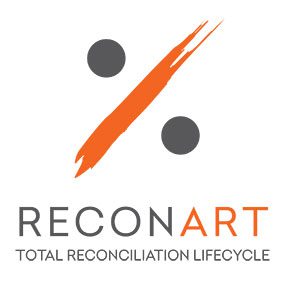
Enterprises must prioritize the software requirements that can ensure long-term adequacy and agility. Here are some key considerations for the selection of a data reconciliation solution that has the capacity to future-proof finance and accounting operations.
Consider your future reconciliation needs, not just for today
Stakeholders usually single out one central reconciliation challenge during the initial assessment of enterprise reconciliation software. For example, sorting out the pile of bank statements, that has been particularly bothersome lately. However, in the course of the discussion, long-term considerations arise.
The anticipated migration to a new ERP system, pending optimization of the banking accounts, or meeting regulatory requirements are also contemplated during software assessments. The client needs to ponder medium and long-term business developments that would potentially affect the key reconciliation solution requirements today.
Risk and rewards associated with a new reconciliation software solution
Client motivations to switch to a new reconciliation tool vary depending on the type of existing process. Growing account complexity and transaction volumes stand out as the main reasons for choosing reconciliation automation. Although many accountants are accustomed to comparing data lines and account balances in spreadsheets, there is a certain turning point when pushback against change becomes counter-productive.
Reconciliation teams need to abandon mundane, repetitive operations, eliminate the risk of trivial human errors and refocus on value-added activities such as account analysis and exceptions investigation. The software that makes a good fit must align with their current work priorities and demonstrate versatility to address new challenges. Investing time and effort in adopting a tool that quickly becomes obsolete is a common mistake.
Key considerations for adaptability and criteria for choosing the right reconciliation tool
Business process transformation begins with re-evaluating the new challenges and the capabilities at hand to handle them. Here are some key considerations to determine the flexibility and robustness of your reconciliation solution:
Ease of adoption and learning curve
While software automation offers obvious productivity gains versus manual reconciliations, there are initial concerns. How steep is the learning curve for the new solution and will the users adopt it are two of them. Some software demands a radically different skillset (coding experience from accountants, for example) and upends the entire routine of the team. An intuitive, business-user-oriented tool is more likely to survive the implementation.
In our experience, daily users find it reassuring when the reconciliation tool operates under a familiar excel-like interface – spreadsheets are the most prevalent tools for any F&A professional group. Reconcilers have the opportunity to put their formula-writing skills to use but, at the same time, leverage software automation scripts for repetitive tasks. Following the adjustment period between the initial implementation and the solution rollout, users take over full control and can fully appreciate the newly acquired capabilities.
Configurable vs customizable solution
A customizable solution looks like an attractive option insofar as it promises to resolve the pressing issues of reconciliations in a specific organizational context today. However, change management of custom programs (often developed in-house) has proven costly and unsustainable for the end client. Users have to turn to the development team even for the smallest adjustment in the reconciliation account structure, matching logic, or exceptions treatment.
On the other hand, fully configurable best practice SaaS solutions allow greater flexibility for scope expansion and provide regular feature upgrades benefitting a broader client base. Version control and migrations stay within the technical expertise of the solution vendor. End users can create, manage, and modify their reconciliation processes independently. The complications of constant IT handholding or reliance on costly professional services does not suit a fast-paced and deadlines-restricted accounting function.
Industry agnostic vs industry/process specialized reconciliation solution
Although financial reconciliation has certain industry specifics, companies from different verticals share a common data-matching concept. At a high level, one needs data comparability and a unique identifier to pair two sets of data. For example, the credit card reconciliation process has shared similarities in hospitality, tech app subscriptions, and employee expenses but with distinct use cases. The specific business logic shapes and modifies the process slightly, but the logical backbone is uniform.
Leaning on industry-tailored reconciliation templates actually inhibits the company’s flexibility to meet its unique and evolving needs. Businesses often take new directions, introduce new lines of business, undergo mergers and acquisitions, or operate at the intersection between two industry domains. Their reconciliation solution must accommodate. Also, a robust reconciliation solution should cater for the reconciliation needs of treasury and finance departments alike.
Scalability of the reconciliation software
A sound reconciliation solution should provide scalability and room for growth. Clients would expand operations geographically, take up process modifications and improvements, or onboard new processes. We have seen instances where the client introduces, say, payables and receivables matching and soon expresses an interest in balance sheet account reconciliation.
The reconciliation solution that keeps up with the growth of the organization it supports should easily tune in to growing transaction and account volumes, new users, and new processes. A scalable reconciliation solution should effortlessly handle seasonal peaks (observed in the travel and e-Commerce spaces), the lows and highs of the business cycles. That adaptability should be a default – there are examples where end-users avail to marginally expanded solution capacity but at disproportioned cost. Such restrictions pose the risk of any software becoming a liability.
On-premise or SaaS reconciliation solution
Another critical choice to be made is the deployment approach– either a SaaS or on-premise reconciliation solution. Clients, especially in government, banking, insurance, and other information security sensitive or heavily regulated domains, often argue that an internally hosted application is preferable, data security-wise. Among other benefits in favour of SaaS solutions, leading hosting providers comply with the highest enterprise security standards and are audited/certified for consistently applying best practices.
Hosting the solution on internal servers requires additional costs and resources in-house to maintain the infrastructure and monitor the application performance. On the other hand, SaaS solutions facilitate secure and unobstructed access via a web browser for geographically distributed teams (shared services centers, for example), organizational changes, home office, or other flexible forms of remote work.
Knowledge transfer and retention
One of the most disrupting events for any team is a key member resigning. Team continuity is under question when the keeper of the informal institutional knowledge is no longer available for consultation by the junior staff. Knowhow can be lost when stand-ins cannot make sense of scattered spreadsheets.
On the other hand, the reconciliation solution serves as a central repository of all things related to reconciliations. Process structure, auditable logic, historic data and supporting documentation reside in one place for reference. With an interactive train-the-trainer, the skills for daily administration of the automated reconciliations are retained and handed over within the team, regardless of the attrition risk.
Managing change effectively and the sensible choice of a reconciliation solution
The choice of account reconciliation solution should be geared towards securing long-term agility as well as addressing the challenges of the day. Failing to deploy a future-proofed reconciliation solution, the organization can only burden the team with another obsolete software to struggle with and disruptive migrations from one suboptimal solution to another.

ReconArt integrates all transactional matching, account reconciliation, and financial close management processes in a secure and auditable environment with a strong focus on best practices, regulatory standards, and compliance mechanisms. The ReconArt SaaS solution ushers in dramatic efficiencies into clients’ existing manual processes generating time savings and reinforcing precision.
























